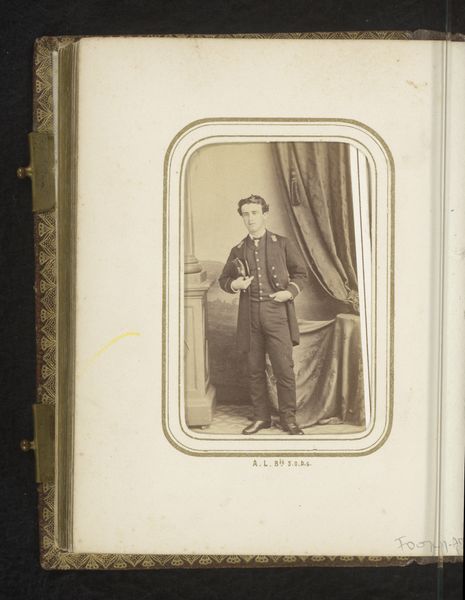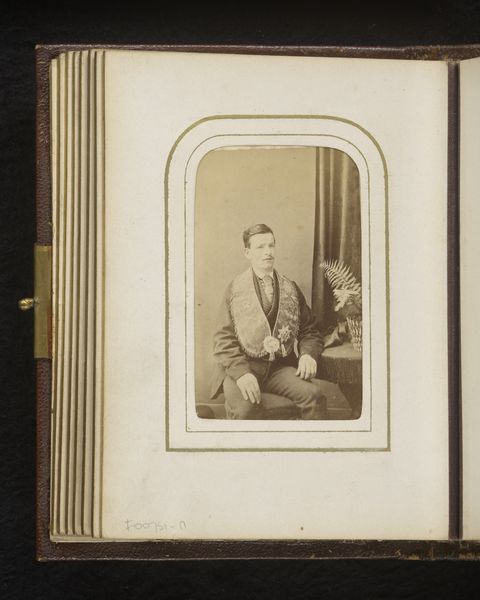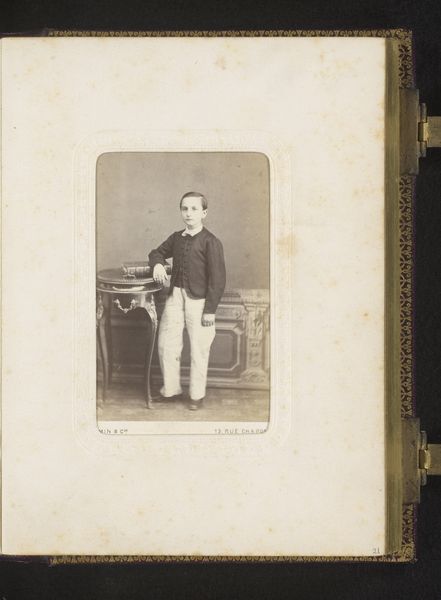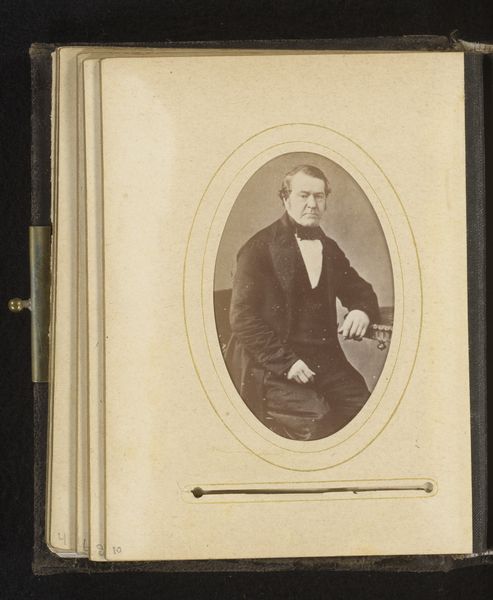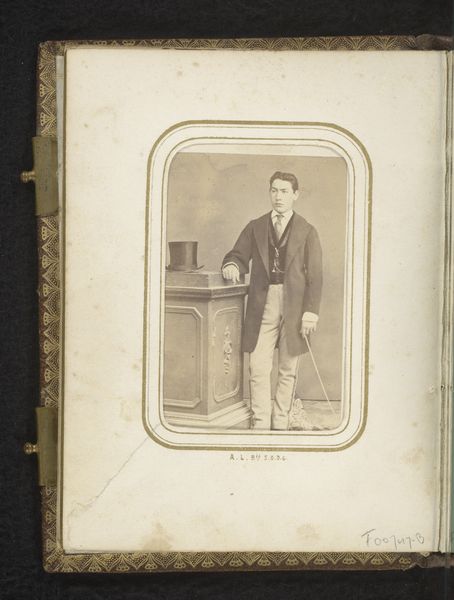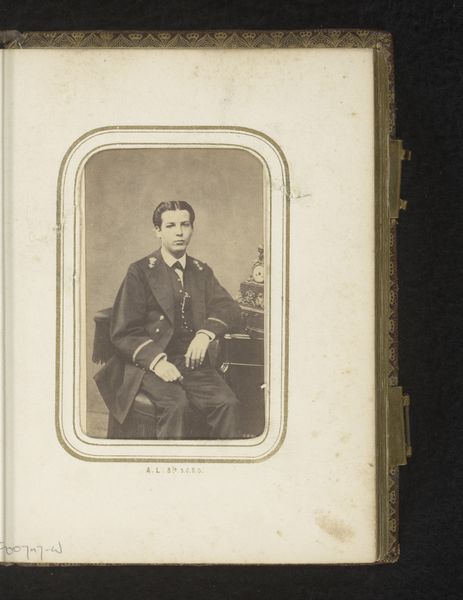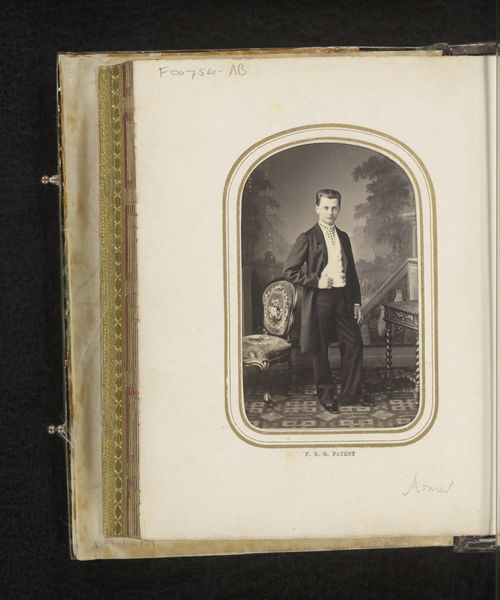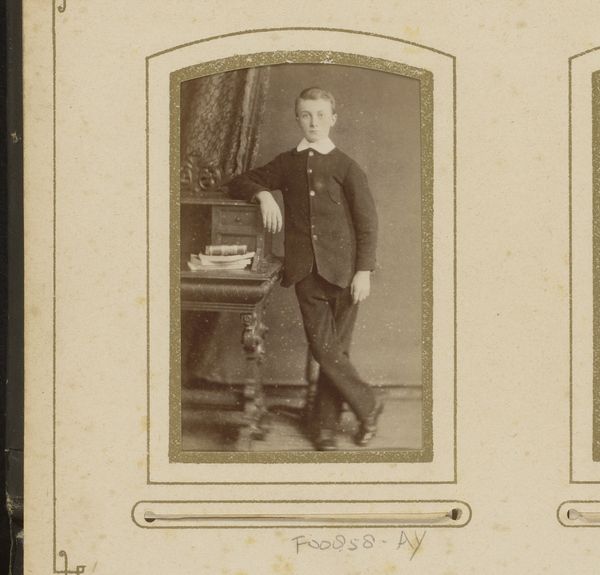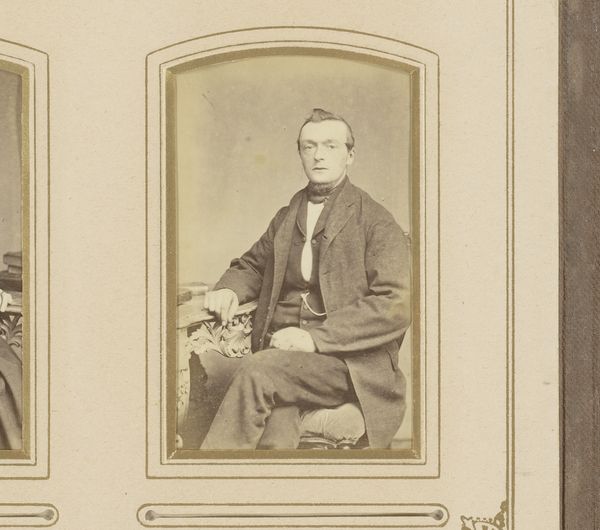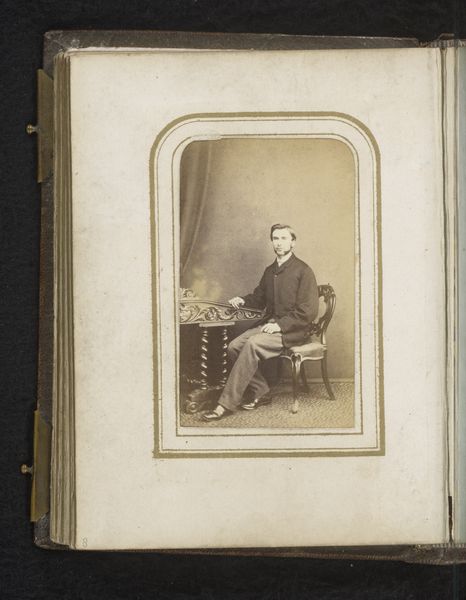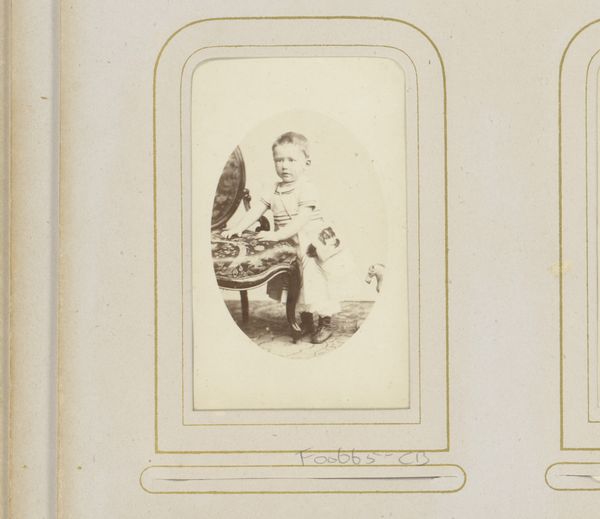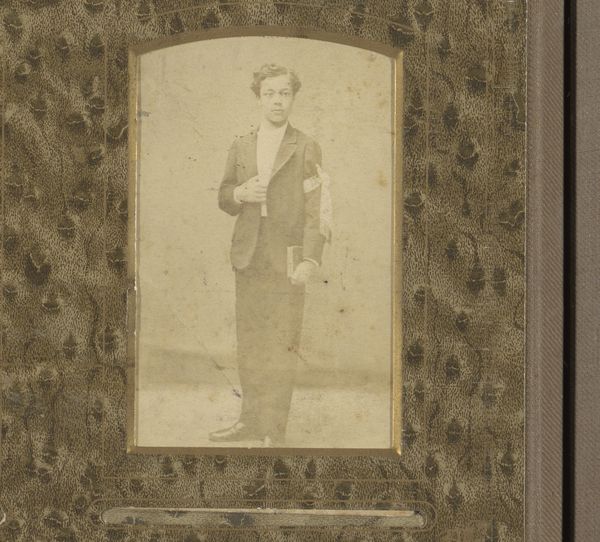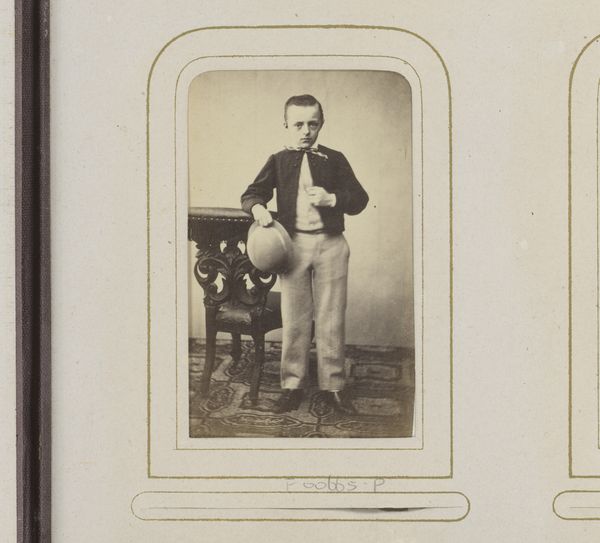
photography
#
portrait
#
photography
#
19th century
#
realism
Dimensions: height 137 mm, height 97 mm
Copyright: Rijks Museum: Open Domain
Curator: There's something profoundly unsettling about this photographic portrait of Nicholas II, Tsar of Russia, created between 1885 and 1900. Even separated from the historical context, a sense of foreboding lingers. Editor: It’s true. The high collar, the medals, even the subtle almost hidden oval frame surrounding the Tsar all seem to trap him. It gives an impression of rigid formality, devoid of warmth or individuality. The face seems prematurely aged, the eyes hold little joy. Curator: Absolutely. And this is precisely where the power of icons resides. As a photographic representation, it intends to present the Tsar in a certain light but what is revealed are the psychological pressures inherent in the role. Note how the formal military attire almost dwarfs him, signaling the overwhelming burden of duty and perhaps, premonitions of inescapable historical fate. Editor: And fate, in this case, would be revolution. I’m struck by the stark contrast between the perceived grandeur intended and the vulnerable, almost weary figure presented. It is almost as if it foreshadows the societal upheaval about to destroy him and the Romanovs. Seeing it on display at the Rijksmuseum offers an interesting insight. It serves as an artifact, reminding viewers of not only the opulence of the imperial rule but its eventual catastrophic collapse. Curator: The medium of photography here functions like a mirror reflecting not just an image but the cultural memory that attends it. The severe aesthetic combined with our historical knowledge lends the photograph the weight of symbolic premonition, transcending the merely personal. Editor: I agree. It shows how portraiture served a public role, reinforcing the political status of its subjects. The contrast is deeply telling when you bring the man and the politics around his existence. Curator: Yes, we recognize in this portrait both a historical figure burdened by an empire and also, unwittingly, a visual testament to the fragility of power itself. Editor: Precisely. The artwork's lasting impact, in the end, arises from how it connects with our understanding of historical turning points.
Comments
No comments
Be the first to comment and join the conversation on the ultimate creative platform.
